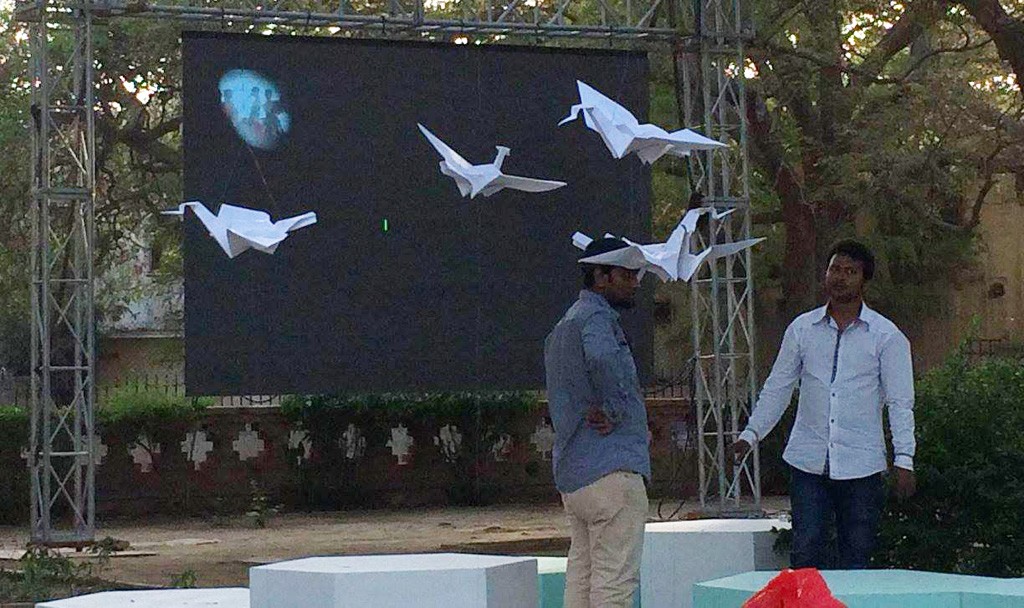
The city was witness to a unique event when a public art exhibition was taken to different parts of the city

The Karachi Numaish made its last stop today (Sunday) at a recreational centre at Machar Colony -- a slum near the sea where most children peel shrimps for a living.
It was meant to be a dream come true for these children who could touch all the models displayed at the exhibitions, play life sized snakes and ladder, and read at a mobile library.
The children were to be given origami classes, allowed to paint, draw and read. They could also sit at wooden stools and play a carom board table which illuminated in the night.
Under an initiative called ‘I am Karachi’ and in partnership with the Habib University and Karachi Metropolitan Corporation, a public art exhibition was held in Karachi. It was called the Numaish -- which means exhibition in Urdu.
The Karachi Numaish worked like a circus and stopped at four different locations of the city where the organisers assembled and re-assembled their art models. The first stop was Frere Hall, the second stop was a cultural centre at Ayesha Manzil, the third stop was the Karachi Zoo and the fourth was a recreational centre at Machar Colony.
Its curator Saima Zaidi said the initiative was taken to create inclusive public spaces for people in Karachi. "Unlike the West where zoos and public parks are centres of activity, public spaces in Karachi are deserted," she said.
She set up 22 models, all of them moving images and arranged them at carefully chosen public places. These artefacts and models included a variety ranging from rides, open library, a seating structure made in the shape of a honeycomb, a Newton’s cradle, the Ludo board game and much more.
An open air theatre was set up which showed the history of the Karachi Circular Railway.
All of these initiatives were taken to entertain and educate Karachi-ites and introduce new models of learning for the children who visited. Science, art and history becomes fun for children when they can touch, feel and see it.
Everything was free of cost. "People who are not used to the idea of public spaces which include all classes of the society were amazed. A lot of them kept asking if they could read for free," said Zaidi.
By going to different places, Zaidi said she was trying to maximize the reach of the project.
When asked about the response of the audience she said that on weekends she was dealing with a crowd of over a thousand, but she was expecting many more people to show up.
"It’s also the fact that this is the first time something like this has happened in the city. It takes time for people to register such events," she said.
As the project moved on, it donated an artifact to each location. For example the library will become a permanent feature at the cultural centre at Ayesha Manzil.
Zaidi is a Karachi-based communication designer, who currently teaches at Karachi University and Habib University. She studied at the National College of Arts, Lahore, and the Pratt Institute, New York.
Several members of the civil society including Tahera Hasan, Mahim Maher and Aamir Habib were also part of the team of organisers.